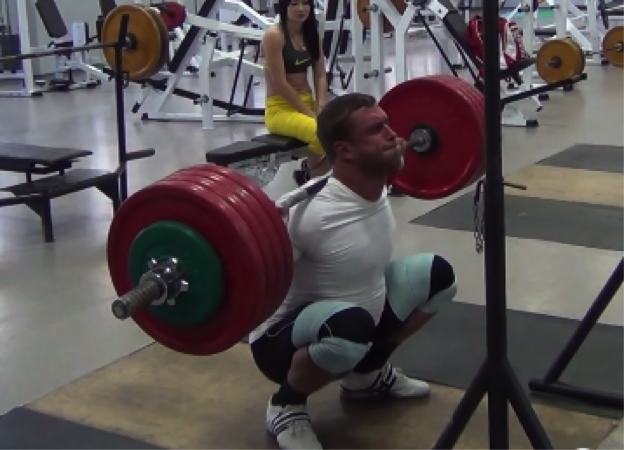Written by Chad Wesley Smith
Paused variations of any lift are great accessory movements to build the full lifts in the most specific manner possible. I say that these variations are the most specific because they are in fact the exact competition lift, just with a pause at some portion of it, thus they will have the highest transfer to your full lift success.
Pausing at the bottom portion of a lift, dissipates the stretch reflex and forces you to learn to recruit as many motor units as possible to overcome the weight. Pausing at any other point of the lift, will force you to control the weight and build quasi-isometric strength, helping overcome a sticking point in any range of motion.
Paused work is often overlooked when thinking about the best accessory movement and that happens for two main reasons. First, paused work isn’t sexy; it doesn’t use fancy bars, chains or bands and doesn’t have a cool name. Second, paused work is hard as hell! An isometric hold with a heavy weight in your hands or on your back is extremely challenging and too often people want to avoid things that are challenging and look for an easy fix.

In powerlifting and weightlifting, paused lifting variations can be used to develop strength at any sticking point. Because of the extended time under tension that paused lifts require, they are a great way to build muscle.
Paused lifts are also a great way to learn technique, as they will allow your body to find its strongest positions and as you spend time in these positions your body will begin to learn them.
Paused lifting variations though aren’t exclusive to the bottom position of the squat, or off the chest, pauses can be done at almost any point during a lift to build strength in that specific position.
Check out how to use different paused exercises for maximum performance…
Squat
The squat can be paused at any portion of the lift to increase strength. Pausing in the hole for a 3 to 7 count is the most common variation of the lift and will build strength in the bottom position of the lift. Pauses can also be done at any point during the concentric version of the lift to build strength at any sticking point you may have. When doing paused work on the way up in the lift, you don’t need more than a 1-3 count pause.
Check out my heavy pause squats starting at 3:50 in this video.
Bench
The bench is the only competition lift that requires a pause, so naturally, you need to train the pause on your chest if you wish to be successful. Training longer pauses (3+ seconds) than what is required in competition is the simplest way to strengthen off the chest. Brandon Lilly introduced me to pausing 1” off the chest (without letting the bar touch the chest at all), this is a great way to teach the lifter to stay tight in the eccentric portion, as well as build strength in the midrange. Pausing ¼, ½ and ¾ of the way up during the lift for 2 to 5 seconds will build strength at that point, so add in a some paused work wherever you are sticking.
Learn how Brandon Lilly uses paused bench variations to power his 600# Raw Bench!
Deadlift
Paused deadlifts are brutal! You can thank Mike Tuchscherer for introducing me to these terrible exercises. Pausing just off the floor, right at the knees, or just short of lockout for 2 to 5 counts. Obviously, the longer pause you use will require you to reduce the load.
Snatch and Clean & Jerk
Pauses will help ingrain proper technique and build specific strength in the Olympic lifts. Pausing right below the knees in either the snatch or clean will help build postural strength and teach you to find your strongest position at this point in the lift. If you or one of your athletes is struggling in the recovery of the lift, pausing in the hole with the weight will help correct that. The jerk can also benefit from a pause in the bottom position of the dip will build strength and will help you excel when you can once again exploit the stretch reflex with a quick reversal.

Give paused lifts a shot as a simple but extremely challenging exercise variation to build strength in any portion of your lifts.
Related Articles
10 Steps to Great Squatting Technique by Chad Wesley Smith
The Best Accessory Lifts for a Bigger Squat by Chad Wesley Smith
Chad Wesley Smith is the founder and head physical preparation coach at Juggernaut Training Systems. Chad has a diverse athletic background, winning two national championships in the shot put, setting the American Record in the squat (905 in the 308 class, raw w/ wraps) and most recently winning the 2012 North American Strongman championship, where he earned his pro card. In addition to his athletic exploits, Chad has helped over 50 athletes earn Division 1 athletic scholarships since 2009 and worked with many NFL Players and Olympians. Chad is the author of The Juggernaut Method and The Juggernaut Method 2.0. Facebook, YouTube, Twitter












